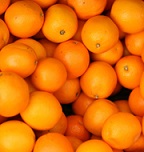The meeting of the Public Servants’ Sustainability Network in The Hague was innovative. Artistic contributions like paintings, a performance and positioning turned it into more than a purely intellectual exercise. The meeting’s workshops were about material waste streams like metals and electronic waste. And agricultural and food waste.
The workshop on food waste was initiated by Martine Groenewegen. Martine is a practical woman. Her site is called biomassadhz.nl (where dhz means: do-it-yourself). On it, she highlights biomass supply and demand. The information is shown on a map, triggering the visitor to go and look for a match in the neighbourhood; this procedure shows where people are most interested in processing biomass.

Reuse of food waste
Agricultural and food waste is an interesting feedstock. When it is used, it does not diminish the amount of food available (no food/fuel problem). Often, modern chemical technology (‘green chemistry’) allows us to add value. For instance, Rodenburg company in Oosterhout, The Netherlands, reuses food waste, it produces starch plastics from wastewater of French fries production. These plastics are 100% locally sourced, 100% biobased, and 100% biodegradable. Typical items made from them are biodegradable plant pots. Horticulturalists use them, they cut labour costs, because the pot does not have to be removed from the soil when the plant has grown.
 Another fine example of reuse of food waste is processing orange peel. This peel is a side stream in all bars world-wide that serve freshly pressed orange juice. Brazil on its own produces a staggering 8 million tons yearly. The Biorenewables Development Centre (BDC) in York develops technology to produce high-end chemicals from this food waste. In a microwave, this peel produces chemicals like lemonine and terpineol, used in fragrances, flavours, food and medicines. And on 29 March 2014, NRC Handelsblad reported about the production of bioplastic PHA from the waste water of chocolate factory Mars in Veghel: 1 gram of product from 3 grams of waste (in Dutch). Developed by researchers of Delft Technical University. The process is still in the research phase.
Another fine example of reuse of food waste is processing orange peel. This peel is a side stream in all bars world-wide that serve freshly pressed orange juice. Brazil on its own produces a staggering 8 million tons yearly. The Biorenewables Development Centre (BDC) in York develops technology to produce high-end chemicals from this food waste. In a microwave, this peel produces chemicals like lemonine and terpineol, used in fragrances, flavours, food and medicines. And on 29 March 2014, NRC Handelsblad reported about the production of bioplastic PHA from the waste water of chocolate factory Mars in Veghel: 1 gram of product from 3 grams of waste (in Dutch). Developed by researchers of Delft Technical University. The process is still in the research phase.
And very interestingly, horticulture produces large amount of food waste. Dutch horticulturalists produce some 42,000 tons annually. Many products are discarded and composted just because of aesthetic shortcomings. The company of Provalor has developed production processes that add value to this food waste. One of these products is Veggiefiber, consisting of insoluble vegetable fibres that can be used in food processing. Food processing industry has discovered Veggiefiber and will soon introduce food products that contain it in the supermarkets.
 Food waste: stale bread
Food waste: stale bread
Back to Martine Groenewegen and her workshop. We concentrated on food waste and tried not to yield to the idea that all waste should be turned to energy – for in the end, this carries the lowest price per unit of input. Looking for commercially interesting examples, we landed on stale bread. Supermarkets do try to avoid baking more than they can sell; but hospitals and catering companies end up with tons of bread each day. What a waste, to compost or ferment this!
So, why could not we have an oven in or next to the hospital, in which we re-bake yesterday’s bread to ‘homemade’ cookies? Or to pizzas? These products might even get a ‘recycling certificate’. The (marginal) business case could be improved by combination with trainee posts. A franchise chain could sell machines for this process, allowing entrepreneurs to earn an income. But processing food waste to industrial products might be commercially more interesting. It could be processed to products like construction materials (Synbra’s PLA insulation foam produced from sugar cane) or textiles (Qmilk’s clothes). Why could not we develop bacteria that could process stale bread to starch plastics? 2014 is the year against food waste. Consumers of the world, reject food waste!
